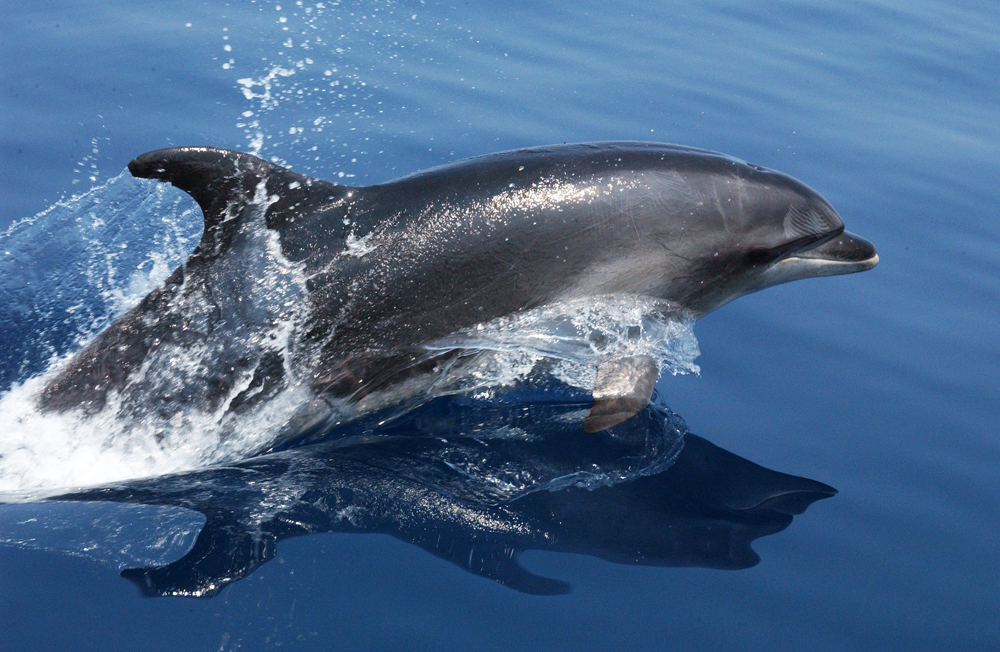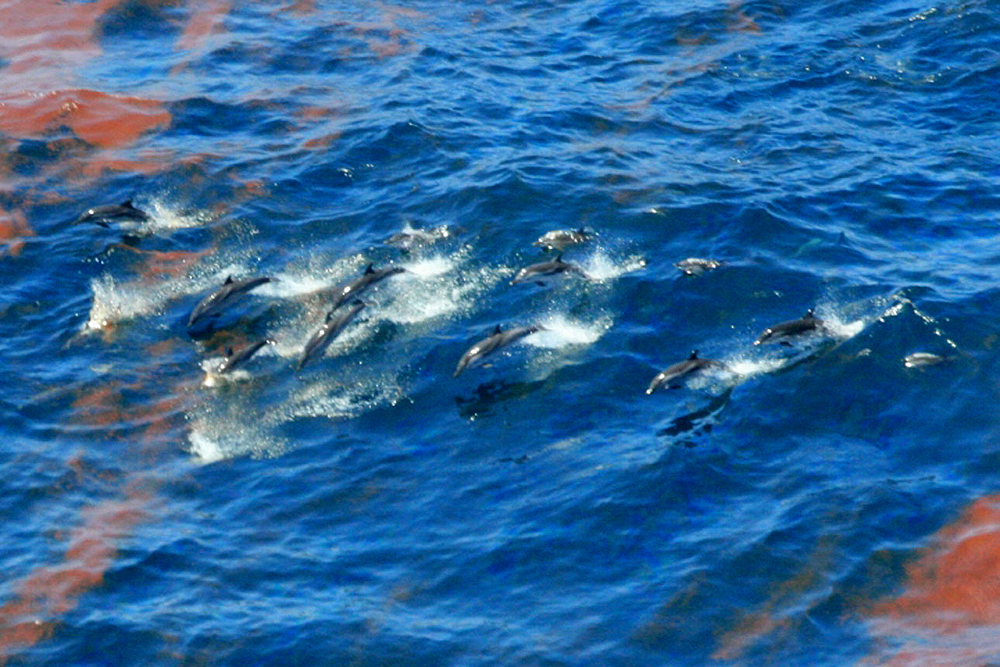Baby Dolphin Deaths Linked To Oil Spill
New study focuses on high mortality rate of dolphin fetuses and babies in the wake of the massive 2010 Gulf spill.
By Vicki Croke
The explosion of the Deepwater Horizon drilling rig and the consequent oil spill in the Gulf of Mexico occurred six years ago, but researchers continue to tally its consequences. A just-released scientific report adds bottlenose dolphin babies and fetuses to the list of likely victims of BP’s April 2010 disaster, which is considered to be the largest marine-based oil spill in the United States.
An earlier study, reported by the National Oceanic and Atmospheric Administration, showed that “bottlenose dolphins stranded in the northern Gulf of Mexico since the start of the Deepwater Horizon oil spill have lung and adrenal lesions consistent with petroleum product exposure.” And a surge in dolphin and whale deaths has been observed.
This latest work from scientists at the University of Illinois at Urbana-Champaign, NOAA, and several other organizations, focused on the increased number of stranded stillborn and young dolphins in the Gulf of Mexico from 2010 to 2013. The results were reported yesterday in the journal Diseases of Aquatic Organisms.
The scientists say that the “unusual mortality event” was likely caused by chronically ill mothers who had been exposed to oil as millions of gallons of it poured into the water over 87 days.
The team reports in a release that they “evaluated 69 perinatal common bottlenose dolphins in Alabama, Louisiana and Mississippi, the areas most affected by the spill, and 26 others found in areas unaffected by the spill.”
It was found that “88 percent of the perinatal dolphins found in the spill zone had lung abnormalities, including partially or completely collapsed lungs.” And, the researchers say, the small size of the dolphins “suggest that they died in the womb or very soon after birth—before their lungs had a chance to fully inflate. Only 15 percent of those found in areas unaffected by the spill had this lung abnormality.”
In 2011, higher numbers of stranded perinatal dolphins were reported in the spill zone than in other years—especially in Mississippi and Alabama.
University of Illinois veterinary diagnostic laboratory professor Kathleen Colegrove, who led the study, points out that bottlenose dolphin gestation takes about 380 days. That means that perinatal dolphins who died in the early months of 2011 could very well have been exposed in the womb to petroleum products released the previous year.
Colegrove, who works in the Chicago-based Zoological Pathology Program at the U. of I., says, “Dolphin dams losing fetuses in 2011 would have been in the earlier stages of pregnancy in 2010 during the oil spill.”
According to a statement from NOAA last year:
Since early 2010, there has been an ongoing cetacean unusual mortality event involving primarily bottlenose dolphins in the northern Gulf of Mexico. Three out of four groupings of elevated dolphin strandings identified within this event followed the Deepwater Horizon oil spill.
This ongoing die-off, with the highest number of dead bottlenose dolphin strandings on record in the northern Gulf of Mexico, coincided with the largest marine-based oil spill in the United States.
Barataria Bay, Louisiana, was one of the most heavily oiled coastal areas from the Deepwater Horizon oil spill, and the new study shows that half of the dead dolphins examined from Barataria Bay that stranded between June 2010 and November 2012 had a thin adrenal gland cortex, indicative of adrenal insufficiency. One in every three dolphins examined across Louisiana, Mississippi and Alabama had this lesion. In comparison, only 7 percent of the dead stranded reference dolphins, collected from other coastal regions outside the Deepwater Horizon oil spill area and time frame, had a thin adrenal cortex.
In fact, almost half of the dolphins with this otherwise rare adrenal lesion appeared to have died without another clear explanation for their death.
Of this latest finding, Dr. Teri Rowles, a veterinarian with NOAA’s Marine Mammal Health and Stranding Response Program and a co-author on the study, said: “Our new findings add to the mounting evidence from peer-reviewed studies that exposure to petroleum compounds following the Deepwater Horizon oil spill negatively impacted the reproductive health of dolphin populations living in the oil spill footprint in the northern Gulf of Mexico.”
Scientists may not be able to exactly predict how this will all play out, but they are sure that there’s a long road ahead. According to a story by Mark Schleifstein in NOLA.com:
“These animals are slow to mature, so it will take longer for the population to recover to pre-oil spill levels because you’ve not only seen the loss of adult animals, but the babies, too,” [Colegrove] said. “It will take many more years to study the population, to fully understand the effects of the spill.”
In a final damage assessment of the spill’s effects released on Feb. 19, federal officials estimated it would take 39 years for bottlenose dolphins in Barataria Bay to recover, 52 years for dolphins along the Mississippi River Delta, 46 years in Mississippi Sound and 31 years in Mobile Bay. The study released Tuesday was conducted as part of the damage assessment.





One Response to “Baby Dolphin Deaths Linked To Oil Spill”
I am so sad to hear this…when will we LEARN…not to drill….WHEN ???? Is Greed better than anythings LIFE.???.Apparently so…..
Comments are closed.